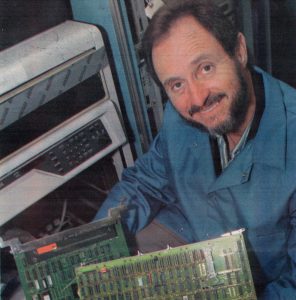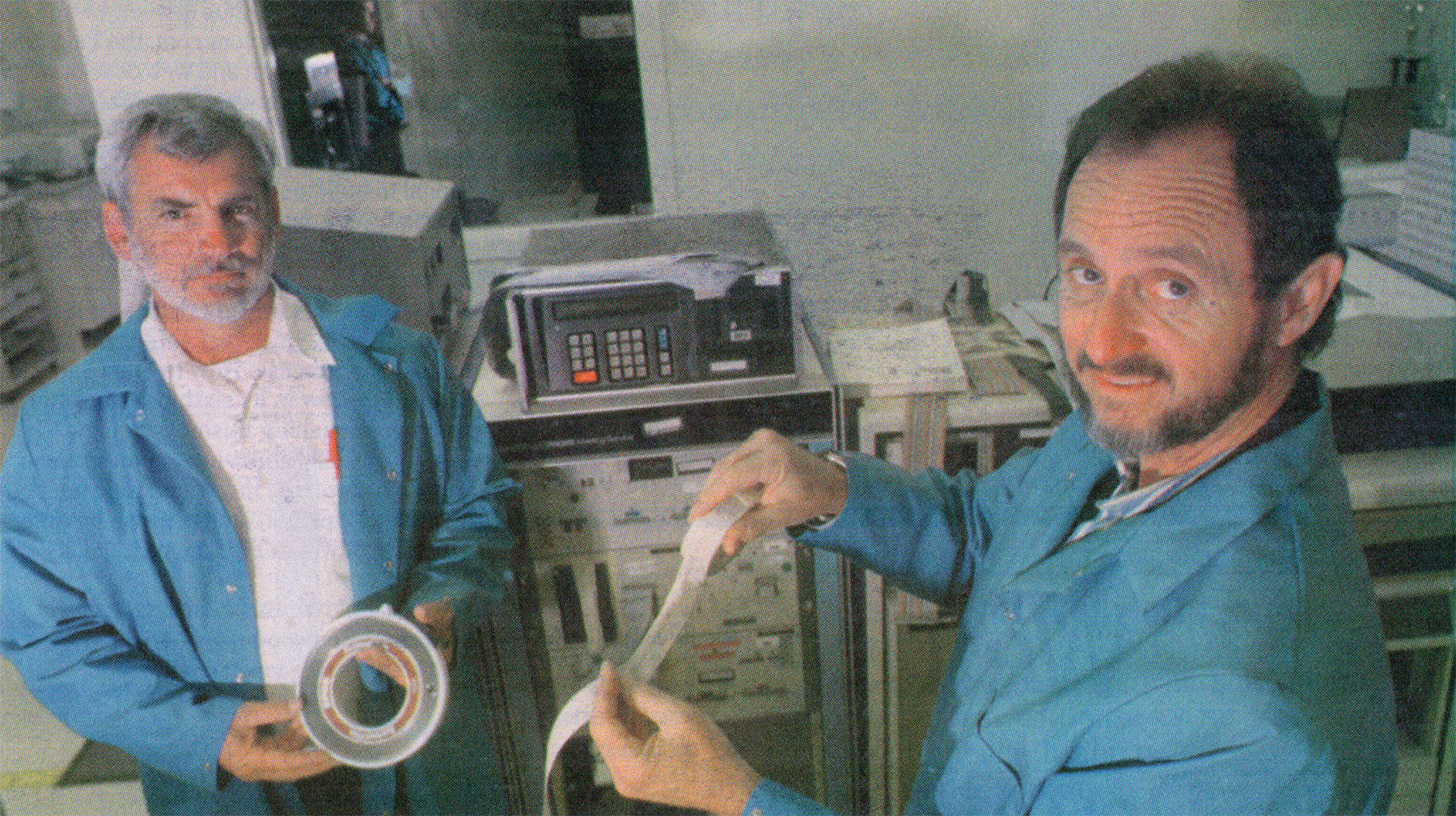The end of the line: Transforming dead computer designs into a viable business — San Francisco Business Times
The end of the line
Transforming dead computer designs into a viable business
By Michael Hytha – Special to the Business Times
 Martin Plotkin spent the first half of his high-tech career on the leading edge. Then he jumped back to the trailing edge.
Martin Plotkin spent the first half of his high-tech career on the leading edge. Then he jumped back to the trailing edge.
Plotkin’s Livermore company, GD California Inc., is thriving and growing in a niche that few technology pioneers think about, let alone enter. He buys old computer circuit board designs from the original makers and takes over the manufacturing and supply for the handful of companies that still need them.
“We’ve got a difficult business to explain to people,” said Plotkin, who was the 22nd employee at Four-Phase Systems Inc., the company that in 1970 designed one of the first solid-state computers. ‘We say, We’re in the end-of-life manufacturing business.’ They say, ‘You’re in the funeral business?’ We say, ‘No, electronics,’ and we go from there.”
After quitting Four-Phase, Plotkin became a general manager at Fairchild Semiconductor, where he oversaw a division building high-speed chips. In 1986, it dawned on him that one small operation, making pinball machine chips, still brought in $2 million even though the chips qualified as relics and Fairchild was ready to abandon the line.
The following year, Plotkin and Lynn McFarland, another Four-Phase veteran, founded GD California in Livermore. The company has since grown to an $8 million company with its sights on $10 million next year. GD California makes 600 products, ranging from relatively simple $150 circuit boards up to $50,000 complex systems such as peripheral boxes for military use. Most frequently, the products are replacement parts for aging but still functional systems such as telecommunications switches.
Making a living from the designs of other companies – even if those companies include Motorola Inc. and Intel Corp. – can be tricky. Orders for each product decline 40 percent to 60 percent a year as customers switch to new technology.
 Plotkin focuses strictly on commercial and industrial high-end equipment, shunning consumer products and rejecting numerous offers for products that have slipped too far out of demand even for him. The engineering and other costs of transferring each product come to about $5,000 to $10,000, requiring a minimum of $50,000 in gross sales to make it worthwhile, he said.
Plotkin focuses strictly on commercial and industrial high-end equipment, shunning consumer products and rejecting numerous offers for products that have slipped too far out of demand even for him. The engineering and other costs of transferring each product come to about $5,000 to $10,000, requiring a minimum of $50,000 in gross sales to make it worthwhile, he said.
Plotkin relies on some 50 vendors to make and assemble most of the components. Sometimes, though, he and his 27 employees must scramble to locate odd lots of out-of-date chips.
Most recently, GD California inked a deal with Blue Wave Systems Inc. in Carrollton, Texas, to take over production of 15 digital signal processing boards and subsystems. GD California expects one or two such transfers each year, giving the company its first continuous stream of new products. The alliance will free Blue Wave to move more quickly in developing new products, said Laura Hatton, that company’s customer service manager for American operations.
“It’s good business sense when you have products that are nearly 20 years old, and your portfolio has changed,” Hatton said.
Once GD California contracts for a product, the company takes over all service and repair work and guarantees that it will fill any replacement orders indefinitely.
”We will never obsolete a product,” said Plotkin. “If they want it, we will get it.”
The 58-year-old electrical engineer, with his wife, still owns a majority interest in the company. He said he has declined several buyout offers and has no desire to take the company public.
Plotkin says he sometimes misses his heady days in Silicon Valley.
“It’s always glamorous to be on the leading edge, to be a pioneer,” said Plotkin, who also worked in the Apollo moonshot program. “Partway through my career, I found it more glamorous to build solid reliable products. Do I miss the leading edge? Sure. But would I trade it? No way.”
Michael Hytha is a reporter with the East Bay Business Times, an affiliated newspaper.
SNAPSHOT
- Company: GD California Inc., based in Livermore, manufactures “end-of-life” products for computer circuit board makers.
- President: Martin Plotkin.
- Founded: 1987.
- Employees: 28.
- 1998 revenue: $8 million.
- Words of wisdom: “It’s always glamorous to be on the leading edge, to be a pioneer. Part way though my career, I found it more glamorous to build solid, reliable products,” says Plotkin.
- Elements of Success: Focusing strictly on commercial and industrial high-end equipment, shunning consumer products and rejecting offers for products that have slipped too far out of demand.
- Key challenge: Making a living from the designs of other companies – even if those companies include Motorola Inc. and Intel Corp. – can be tricky. Orders for each product decline 40 percent to 60 percent a year as customers switch to new technology.
- Web: www.gdca.com.

